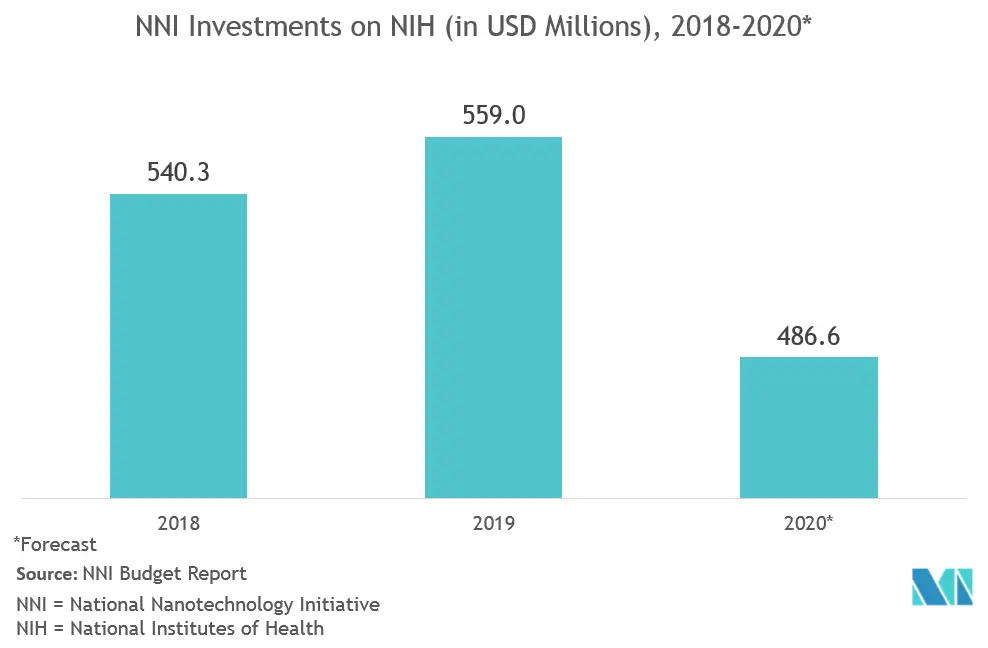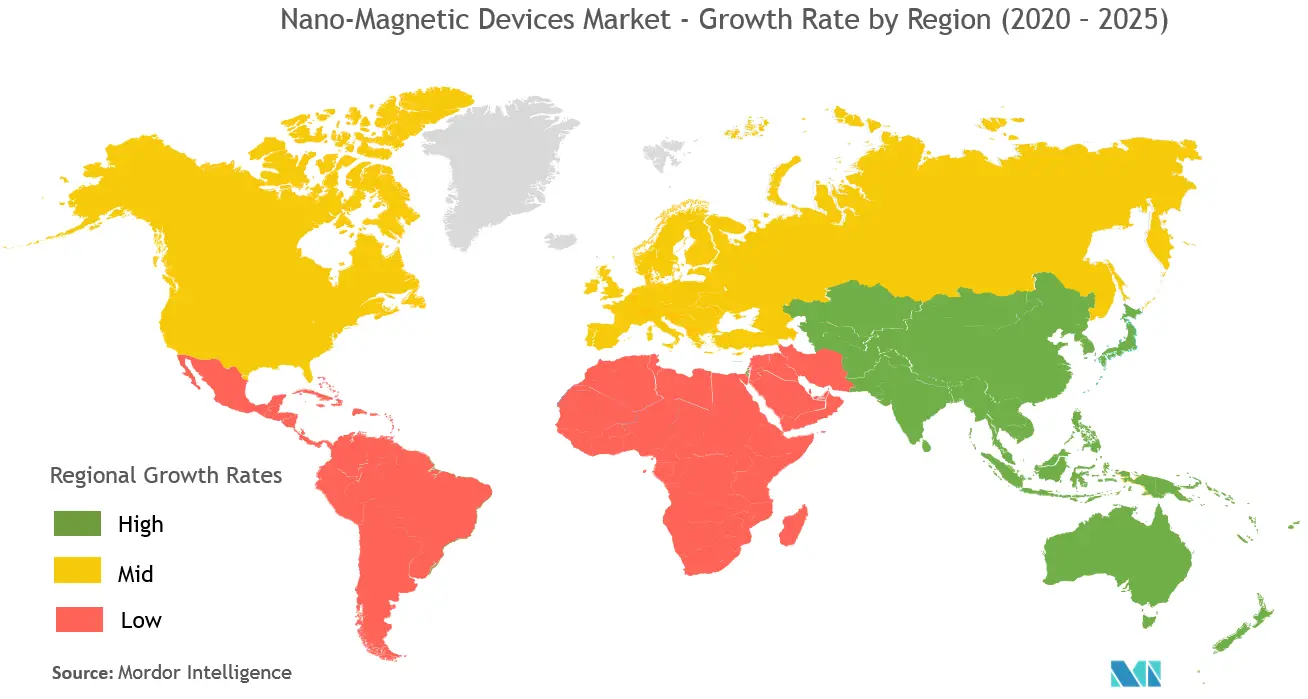Market Trends of Nano-Magnetic Devices Industry
This section covers the major market trends shaping the Nano-Magnetic Devices Market according to our research experts:
Healthcare is Expected to Grow at a Significant Rate Throughout the Forecast Period
- The major driver for the healthcare segment of the market is the increasing research & development activities across developed economies. For instance, in January 2020, KAUST scientists jointly produced drug-coated iron nanowires to kill malignant and tumor cells selectively. Iron nanowires coated with drugs can be a better option for malignant cell therapy as they can be moved to the tumor site with the help of an external magnetic field before starting a cancer-killing process.
- In May 2020, the researchers at the Immanuel Kant Baltic Federal University, with scientists at the Department of Physics of the Lomonosov Moscow State University, have developed a sensor that combines advanced technologies in the fields of magnetism solid-state physics. The newly developed sensor can be applied in the field of biomedicine.
- In May 2020, Nanoscope Therapeutics Inc. received NIH support to increase the pace of ultrafast laser-based retina gene delivery. The company has developed Multi-Characteristic Opsins (MCOs) to steer cells toward low levels of white light, which results in an improved vision at ambient room light.
- Many medical research organizations use a low power NIR laser beam whose intensity can be enhanced locally, to minimize significant damage while inserting therapeutic genes. With the help of nano-magnetic sensors, it can be achieved at a lesser cost. These ongoing research activities will drive the growth of the healthcare segment in the coming years.

North America Geographic Segment is Expected to Hold a Significant Share Over the Forecast Period
- The increasing investment by countries like the United States is driving the growth of the region. The United States President’s 2020 Budget requests over USD 1.4 billion for the National Nanotechnology Initiative, a continued investment in basic research, and technology transfer efforts that are heading to future innovations.
- In February 2020, NanoCanada, a Canadian nanotechnology community, completed its 5th mission to “Nanotech Japan.” More than twenty participants across Canada joined the mission that included site visits in Seoul and Tokyo, along with participation in the world’s one of the significantly major nanotechnology showcases. These initiatives will help to build business relationships and technology transferring networks across the globe.
- In June 2019, researchers at Oregon State University developed an improved technique for using magnetic nanoclusters to kill difficult-to-reach tumors. The University has developed a “systemic” delivery technique called “intravenous injection,” which has considered to be much easier and fruitful.
- Moreover, the factors which are also driving the growth of the region are the high concentration of significant manufacturers, the rising infrastructural development, and the increasing rate of urbanization.


